Text & photos: Usha Hariprasad
The word rolling hills must have been conjured up at Yercaud. I can think of no other suitable place for its origin. The journey to Shevaroy hills lay fraught with peaks at varying heights, some small hillocks, to some lightly touching the clouds. The plantations and their tall winnowy cypress and pine trees, the winding lanes that cut across hills and springing beautiful surprises – a neatly tucked village, or a tiny little tea shop …. I am sure when the British viewed this landscape it would have reminded them of their picturesque countryside complete with rolling hills and crystal clear lakes. I have digressed a bit. I was visiting Yercaud for a day, and this was the scene that captured me as we drove along the roads leading to Yercaud.
At first glance, Yercaud does not seem to boast of much. A few hole in the wall outlets, a lake, a few shops selling produce, and a small park nearby. When I arrived in the evening with the sun setting in the hills and the distant silver oak plantations acting as sentries, the hill station seemed very tiny. And the budget hotel I checked into, confirmed this – the guy at the reception gave me a tourist brochure that listed all the sightseeing places within five-seven km radius of the station. So the next morning, after imbibing a piping hot breakfast of idli and dosa from Hotel Saravana Bhavan, I set out to explore this hill station.
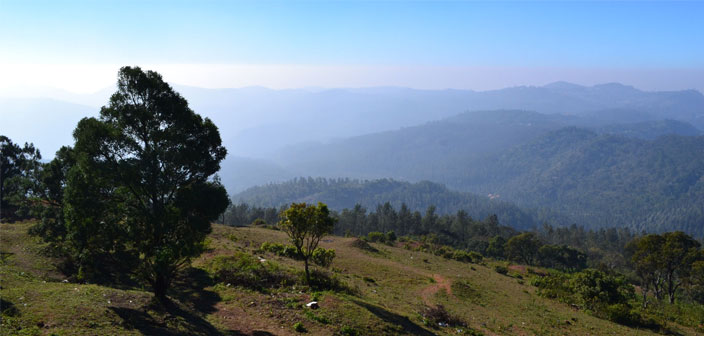
At an altitude of 4,970 feet, Yercaud is a tiny hill station located in the Salem district of Tamil Nadu. Yercaud is derived from two words – Yeri that means lake, and Kadu meaning forest. Essentially it meant ‘forest lake’. It makes sense as the Yercaud Lake forms the central part of the town.
Like all other hill stations in India, the British tried to create a home away from home at Yercaud. Though initially the hill stations in India were started as a getaway from the heat of the plains, the remoteness offered by these hills – far away from the Indian plains and locals, was a tremendous attraction to the British. They wished to create a community of their own in these hills complete with woods, lakes, cottages with overgrown creepers and blooming flowers, very similar to the English countryside. Of course, add clubs, theatres, libraries etc., and the picture is complete of an English community in a foreign land. Yercaud was such a community not just meant for the British civilians, as it gradually attracted missionaries, officials and planters from the neighbourhood as well.
With this piece of information I set about discovering more about this quaint little hill station. My first stop was to visit the Shervaroyan (Servarayan) Temple located at Shevaroy Hill. It made sense for me to start my sightseeing from here. After all, Yercaud is the main town of Shevaroy/ Shervaroyan Hills that form a part of the southern ranges of Eastern Ghats. The name Shervaroyan might have been derived from the god Shervaroyan who is the main deity of the temple.
Temples at Yercaud
From afar the rectangular shaped temple does not look like much. Unlike the other South Indian temples that boast of a towering Dravidian style gopura, there isn’t much of a grand entrance to this temple. But the surrounding panoramic view of the ranges more than make up for this. Once inside, you realise it is a cave temple, glowing with the numerous lamps inside. Inside the cave are two deities – Shervaroyan, the deity of the hill, and the river goddess Kaveri. The temple sees a huge throng of devotees during the month of May when the temple is decked up for its annual festival. Behind the temple there is supposed to be a wishing well. But I could not sight it. What makes this place interesting apart from the temple is the view. It offers a sweeping view of the town and the surrounding villages at a height of 5,326 feet. The tribes outside the temple sell some unique roots, fruits and nuts specific to the hill station.
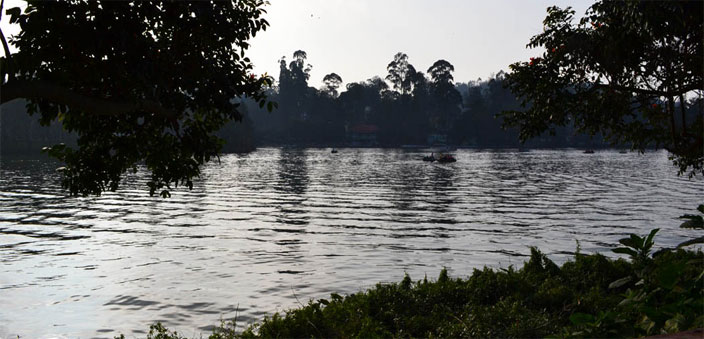
The next stopover at Yercaud sightseeing was the Sri Chakra Mahameru temple at Nagalur, seven kilometres from Yercaud. Though Yercaud has a lot of temple shrines, what attracted me to this temple was the board mentioning ‘World’s largest Sri Chakra Maha Meru’. For the uninitiated, here is brief description of what a Sri Chakra Maha Meru is. Wikipedia defines Sri Chakra as a mystical diagram having nine interlocked triangles with a central point. The central point symbolises the Shiva and Shakti union, while the various triangles represent gods and goddesses. Mount Meru or Maha Meru is the sacred mountain of Hindus that resembles a Sri Chakra when viewed from top. This temple at Yercaud has the main deity of goddess Lalitha Tripurasundari. Just above the inner sanctum of this temple is the tower that is built in the form of this Chakra.
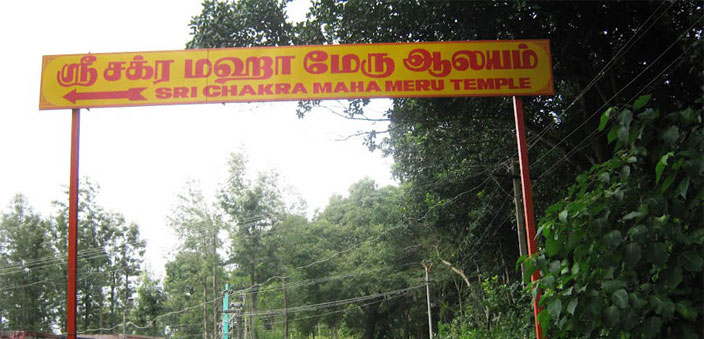
The temple is quite large, clean, not to mention peaceful. There are idols of other gods – Buddha, Vishnu, Shiva, Saraswati, etc. A board left of the main deity explains in detail about the Sri Chakra. All in all, a worthy place to visit.
Other temples worth visiting at Yercaud are the Rajarajeshwari and Annamalaiyar temples.
The National Orchidarium
My next stop was the National Orchidarium and Experimental Garden. Hill stations have always boasted of herbariums and botanical gardens. The reason for this is pretty obvious. The cool climate of hill stations delighted the English who began growing flora and fauna that mimicked their countryside. Thus the first nurseries and botanical gardens came up for this reason – as a place for experimentation of new crops, to test out commercial crops such as tea, coffee, and also to provide local residents with seeds.
The National Orchidarium and Experimental Garden at Yercaud came up around 1963. Today it is maintained by the Botanical Survey of India, and boasts an area of more than 18 hectares. It showcases some interesting collections of endangered plants, insectivorous plants and exotic varieties. Some highlights of this place are the stunning display of different varieties of orchids, insectivorous plants like the pitcher plant and so on.
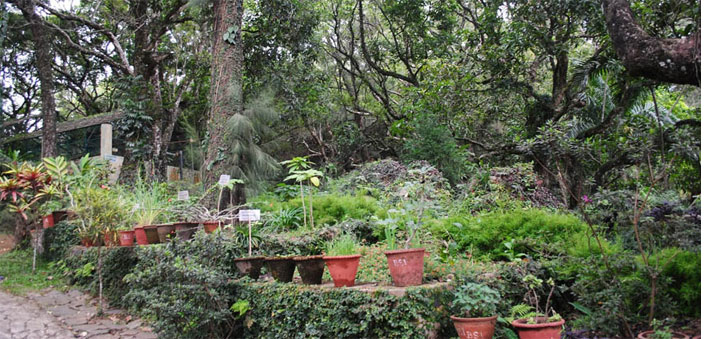
Farms, gardens and a lake
The book The Magic Mountains by Dane Keith Kennedy mentions that hill stations were a place of parties and celebration. Yercaud was no different. Breakfast parties, afternoon tea parties, picnics and dances were a routine. No wonder Yercaud has some fancy spots like Lady’s Seat, Gent’s Seat, etc. Lady’s Seat for example, is a viewing point providing a panoramic view of the ghat-s. A telescope kept nearby gives you a beautiful glimpse of the ghat-s and the Mettur dam below. A local mentioned that this place was a favourite hangout with the British ladies. Located close to the Lady’s Seat is the Silk Farm and Rose Garden of Yercaud. The Silk Farm educates you about the silk process, its history etc., while the Rose Garden is a haven of different varieties of roses. The huge sloping garden with its astounding views, is a great way of checking out the sunset.
Yercaud Lake is another pretty attraction of this hill station. The manicured garden, boating services with row and pedal boats, the numerous parks adjoining the lake – Deer Park, Anna Park etc., makes this a place worth spending time with family. Plenty of eateries surround the lake and the smell of brewing hot coffee from the stalls nearby, is heavenly. Fried snacks, fruits local to the area, South Indian delicacies like idli, vada and dosa are not to be missed here.
A little bit of history
If you do like checking out historical places then head out to Montfort School at Yercaud. Started as a European School in 1917 by Montfort Brothers of St. Gabriel, today it is one of the best boarding schools in the country. The wide grounds inside the campus, a serene chapel, a library near the school, makes it a delightful way of spending time in this hill station. However, do note that it is a working school and allows visitors only during specific hours and days. Have a chat with the local librarian and he is sure to relate charming anecdotes of this hill station and its residents. It is from him that I discovered a quaint little place called the ‘Sweet Rascal’. It is a delightful little non-vegetarian restaurant boasting of a host of amazing things – witty one liner boards, lots of open spaces, German dogs, up-cycled products, bonsai plants, not to mention good food. The owner Vishnu Kaliappa is a storehouse of information and is a delightful person to talk with. Visit this place and you will come away inspired by this entrepreneur. Take care to make prior reservations if you mind waiting.
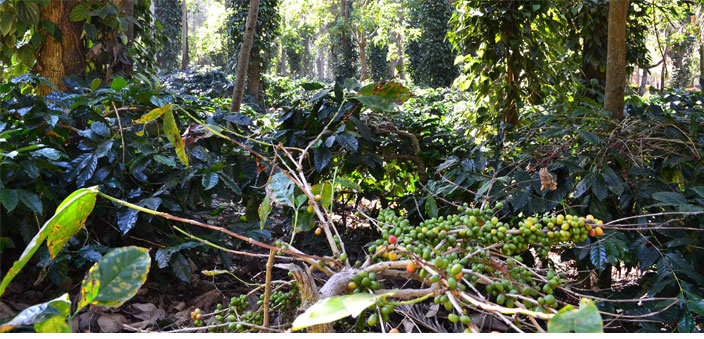
Other attractions
Other places worth checking out at Yercaud are the 32km Loop Road, Kiliyur Falls, Karadiyur Point and Pagoda Point. The 32 km road as the name suggests, is a loop road that offers great views of plantations and dense foliage on each of its hairpin bends. This makes for an enjoyable bike ride experience. The first coffee plantations at Yercaud were established in 1829 by M.D. Cockburn. He is known as Father of Yercaud, who introduced pears and apples as well, into the community. Slowly, mixed plantations with spices like pepper, cloves and trees like silver oaks, eucalyptus, became a part of these vast plantations. So a drive here will give you a taste of this. Tea plantations however, arrived later at this hill station.
Kiliyur Falls is a lovely spot located around three kilometers from Yercaud Lake. The way to the falls especially at the final bend is a bit steep, and requires reasonable fitness levels to trek down. As I was planning to go to Hogenakkal Falls, I decided to skip the Kiliyur Falls.
Yercaud also offers adventure sports. You can try your hand at ATV bike riding and tree top rope activities offered by Grange Tree Top adventures. Nature trails and trekking are also other activities that you could try out at this hill station. The Chennai Trekking Club offers quite a few alternatives.
Shopping
The hill station boasts of a number of outlets selling oils that contain herbs like lemon grass, thyme, peppermint, cloves, etc. Along with spices, oranges and coffee, these aromatic oils can also be purchased here.
Getting there
Yercaud can be easily reached from Salem. It is a mere 33 km from here and Salem is well connected with Bangalore and Chennai by buses, trains and flights.
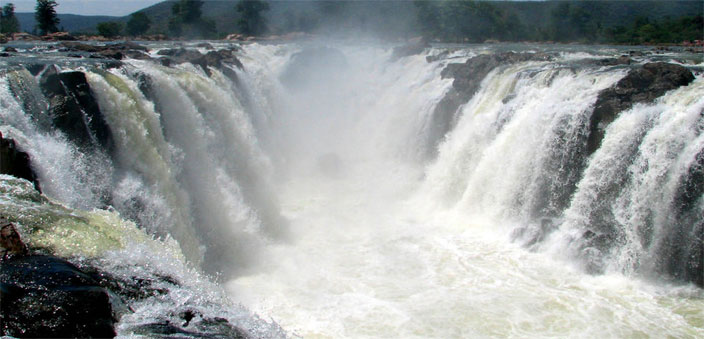
The Hogenakkal Falls
Hogenakkal waterfalls is located closed to Dharmapuri, some 48 km away. The name is derived from ‘Hoge’ that means smoke and ‘Kal’ that means rock. When water cascades down the rocks in force, smoky mist is formed around these rocks, and hence the name Hogenakkal. There are more than twenty waterfalls at Hogenakkal – the river Cauvery winds through narrow canyons and plunges down at numerous places here.
A coracle ride is a must on these waters. It is one of the loveliest way of exploring the rocks, the caves, go near the waterfalls and enjoy the tranquil waters of the stream. Initially, the boatman will take you to a watchtower from where you get a glimpse of the flowing waters and its numerous falls. Sometime during the ride you will be taken closer to the waterfalls. Trust me this is quite an exhilarating feeling. When you get near the falls, the heady water seemingly tumbling on your head, the sprays drenching you, is quite an excitement.
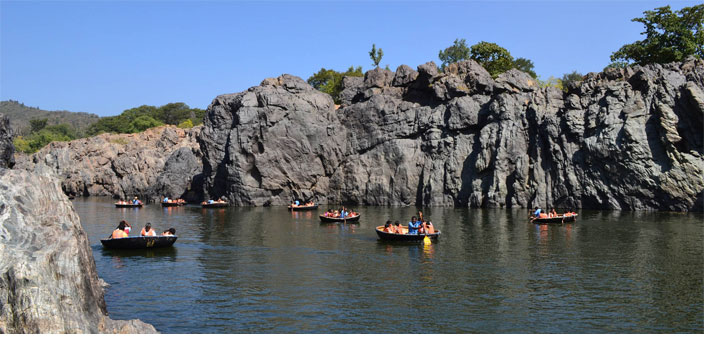
In the distance, you can see the misty spray around the rocks. As you trapeze downstream, you see other coracles too. You will also see floating shops coming in your way and the boatman speaking in either Tamil or Kannada, offering you anything from a cola to chips and chocolates. Carbonite rocks all around you, peaks of varying heights, and the rugged landscape is quite a sight, and creates a surreal experience on these wide waters. At the end of the ride you will be taken to a small waterfall where you can spend some time. The numerous fishes, the gushing stream from the small rocks near the falls – all add to the charm of the fall. The entire coracle ride will perhaps take an hour or more.
At Hogenakkal there are many shops offering fried fish, curry, coffee and South Indian snacks like idli. You will also be surprised to see a lot of oil massage shops here. The water of the falls traverses forests where many medicinal herbs grow. So a massage with oils and showering under the falls is a popular thing to do. If you have time, there is a crocodile rehabilitation centre near by that you can visit as well.
Things to note
Avoid visiting Hogenakkal during monsoons, and especially during weekends. The weekends see a lot of crowd and there is a queue for the coracle ride.

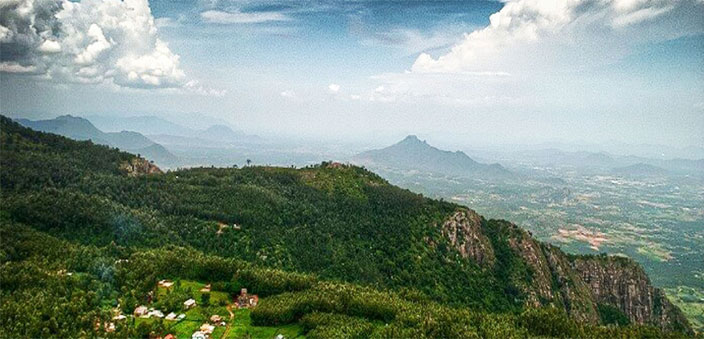
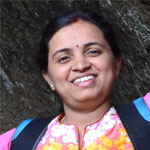 [/column]
[/column]